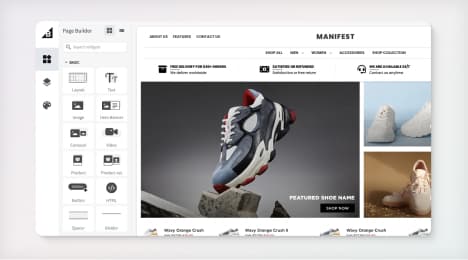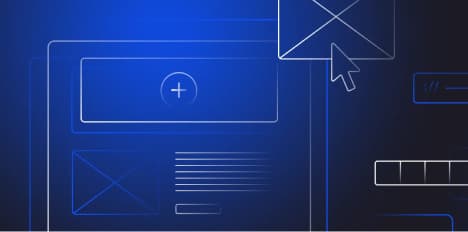
Watch Our Product Tour
See how BigCommerce helps you build and manage your online store with ease.
- Ecommerce Insights

6 Key Steps to Launch Your Online Store
Explore our Launch Foundations series to get your BigCommerce store up and running quickly.
BigCommerce helps growing businesses, enterprise brands, and everything in-between sell more online.
What is Revenue Optimization?
There are three main ways your company can generate revenue: acquisition, retention and expansion. Acquisition is bringing in net-new customers, retention is getting those customers to renew subscriptions or make repeat purchases and expansion is upselling or cross-selling to your existing customers.
To have the highest profits and the most sustainable growth, you need to maximize the results you see from all three of those channels along with your pricing strategy.
Unfortunately, many companies focus on just one of those areas, like acquisition, but in order to truly optimize your revenue, you need to take a holistic approach.
Defined: Revenue Optimization.
Revenue optimization is the management of acquisition, retention, expansion and pricing strategies in order to improve business health and profits.
When you leverage revenue optimization, you’re working to not just impact the earnings from each individual sale, but rather improve the sum of your income. So, it does require a balancing act between the different contributing strategies since your efforts might decrease the results in one area in order to create a bigger increase elsewhere. In the long-term, though, revenue optimization leads to more sustainable growth.
How to Optimize the Areas of Your Revenue
There are four top-level strategies to work on when optimizing your revenue: acquisition, retention, expansion and pricing. As you’re working to maximize the results of each area, it’s important to remember that the strategies are not siloed. Changes to your pricing strategy will impact your acquisition, retention and expansion efforts. Improvements to customer retention can also help with acquisition and expansion and influence pricing. So your efforts should take into consideration not just what’s best for the single strategy but also what’s best for how it’ll impact the other areas.
1. Acquisition
To get the best results from your customer acquisition strategy, you want to attract the best-fit prospects who will provide the most revenue for your company while also keeping your customer acquisition cost as low as possible.
The foundation of doing this successfully is collaborating with teams across your company to define your buyer personas. Buyer personas are semi-fictional representations of your best-fit customers. If you’re a B2B company, you’ll also want to have defined ideal customer profiles, which are descriptions of the types of companies your buyer personas work at.
Buyer personas and ideal customer profiles help you ensure you're investing your marketing and sales resources into attracting and nurturing prospects who have the best likelihood of becoming successful customers. As you’re creating them, you need to take into consideration who is the most interested in your offering, who is the easiest to sell to and who sees the most value from your solution while having the least support needs.
Once you ensure you’re going after the right leads, the next step of optimizing your acquisition strategy is to determine which customer acquisition channels generate the most revenue and have the highest ROI.
It’s important to analyze channels with both revenue and ROI in mind to get the full picture of whether or not a channel is cost-effective. For example, if you get the most revenue from paid advertising but invest the most in it and your organic social media efforts bring in the second-largest amount of revenue and require a much smaller investment, social media might be a more valuable channel for you to leverage.
2. Retention
It’s much cheaper to retain existing customers than it is to acquire new ones, and increasing customer retention rates by as little as 5% can increase profits by 25–95%.
A successful retention strategy revolves around good customer service. Consider the following questions:
Does your product meet your customers’ expectations?
Does the value your product provides align with what customers paid for it?
If something goes wrong with your product, do your customers know how to contact your company?
Do your customers feel like their feedback is being heard and addressed?
The answers to those questions will determine how loyal a customer will be and how likely they are to make repeat purchases as well as recommend your company to others.
Some of the work needed to optimize your retention strategy occurs before a customer is even closed. Expectation setting, for example, happens during the marketing and sales process. You need to ensure how a product is positioned to a prospect early on aligns with what they actually receive post-sale.
To help customers get value from your product, you can equip them with resources and training. Create knowledge base articles, video tutorials or trainings that teach customers about every aspect of your product, from how to set it up to how to use it to how to maintain it to why it’s valuable. What these resources should look like will depend on your product and your customers.
For example, if you sell makeup, you could create resources on different techniques for applying your products, what the best practices are for storing them are and what ingredients they contain. An office furniture company, on the other hand, could provide written and video walkthroughs of how to assemble their products, tips for interior design and warranty information.
Another major aspect of customer retention is your customer feedback program. Customer feedback can help you determine which products are the most valuable, what your customers need from your company and where you have room for improvement. Customer feedback can also help you identify who your best-fit customers are and where opportunities for more revenue lie. So, it’s important to collect feedback both informally and formally, through surveys, interviews, reviews and social listening.
3. Expansion
Existing customers are 50% more likelyto try new products and spend 31% more than new customers. So, in the long-term, expansion revenue is more sustainable than acquisition revenue.
Expansion revenue is gained through upselling and cross-selling to existing customers. Many tactics to improve your expansion strategy overlap with the tactics for improving customer retention: you need to take customer feedback into account and ensure they’re seeing success with the product they’re currently using.
Then you can expand on what they purchase from you by promoting similar products or complementary products. If a customer bought a laptop from you, see if they also want computer accessories like power cables, carrying cases, external hard drives and extra monitors. Once their computer gets old, reach out and see if they’re interested in upgrading to a newer model.
If a customer has had a positive experience with your company and your product, they’re likely to be open to continue doing business with you so a simple communication can result in more sales.
4. Pricing
Optimizing your pricing strategy to maximize revenue can seem misleadingly simple: you just need to set a price that makes you a profit while also enabling you to sell a sufficient number of units. Unfortunately, the price that enables you to close the most sales doesn’t always result in the highest profits and neither does setting the highest price.
It’s important to take into consideration your buyer personas and their budgets.
How much value do they assign to your product?
How much need do they have for your offering?
How much can they afford to pay and how much are they willing to pay?
You can influence the answers to some of those questions by bundling multiple products or offering the option for bulk purchases to increase the value received in comparison to price — but that won’t be effective for every pricing strategy.
Your pricing strategy doesn’t just influence your profits but also how your company is perceived. For example, if you go with a prestige pricing or price skimming strategy, you’re positioning yourself as luxury and high-quality, and you’ll see fewer sales with more profit generated from each one.
You also need to take into account the pricing strategies of your competitors because it can influence how your product and company are perceived and how likely customers will be to pay what you’re asking.
When you’re thinking about pricing long-term, you need to consider how you can maximize the profit from both individual sales and individual customers at the same time. Since retention and expansion are more sustainable and profitable than acquisition, the goal behind your pricing strategy should be to support generating repeat purchases — and that might involve making less revenue from your first engagement with a customer in order to get them through the door.
Conclusion
By successfully optimizing your revenue, you make your company healthier and position it to grow more sustainably. But, it’s important to keep in mind that revenue optimization is a data-driven process.
Identifying your best-fit, most-profitable customers requires segmentation and data analysis. Then as you work to perfect your acquisition, retention, expansion and pricing strategies, you’ll need to experiment and track and measure the results.
You also need to ensure that you’re balancing your investments with the results you’re seeing. There are many moving parts in play, and you’ll likely see some failures before you get everything right. But, if you’re spending more in one area than you’re making, that’s probably not the right path to go down for your company.
BigCommerce helps growing businesses, enterprise brands, and everything in-between sell more online.
Start growing your ecommerce business even faster.
High-volume or established business? Request a demo